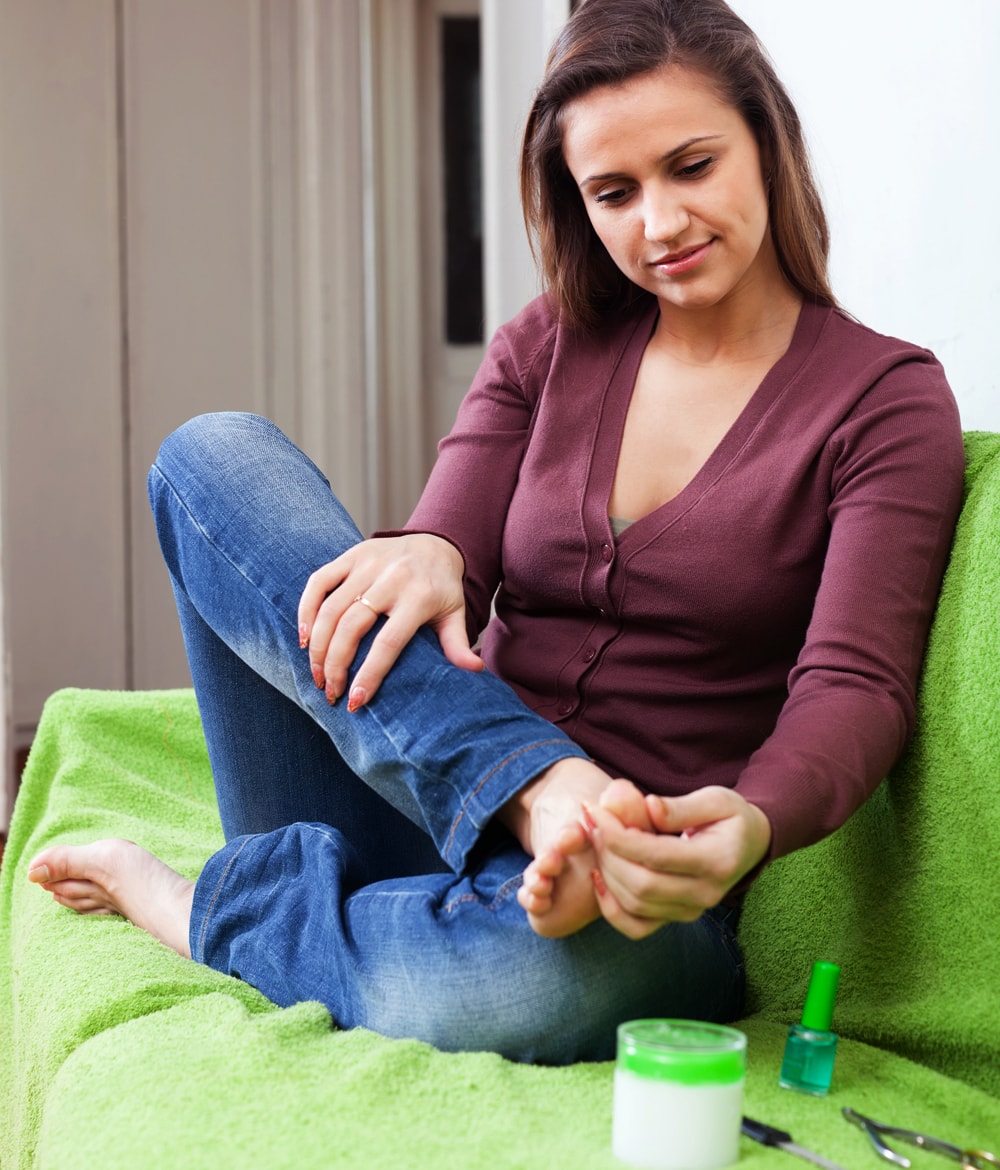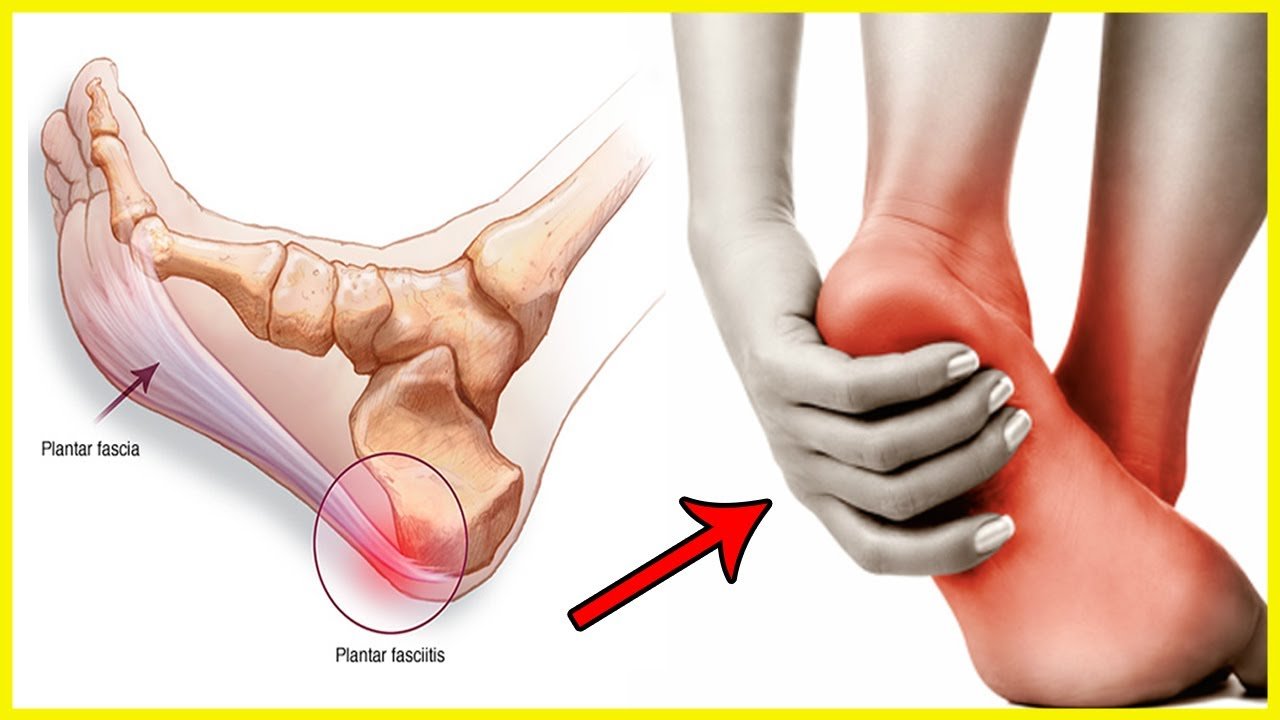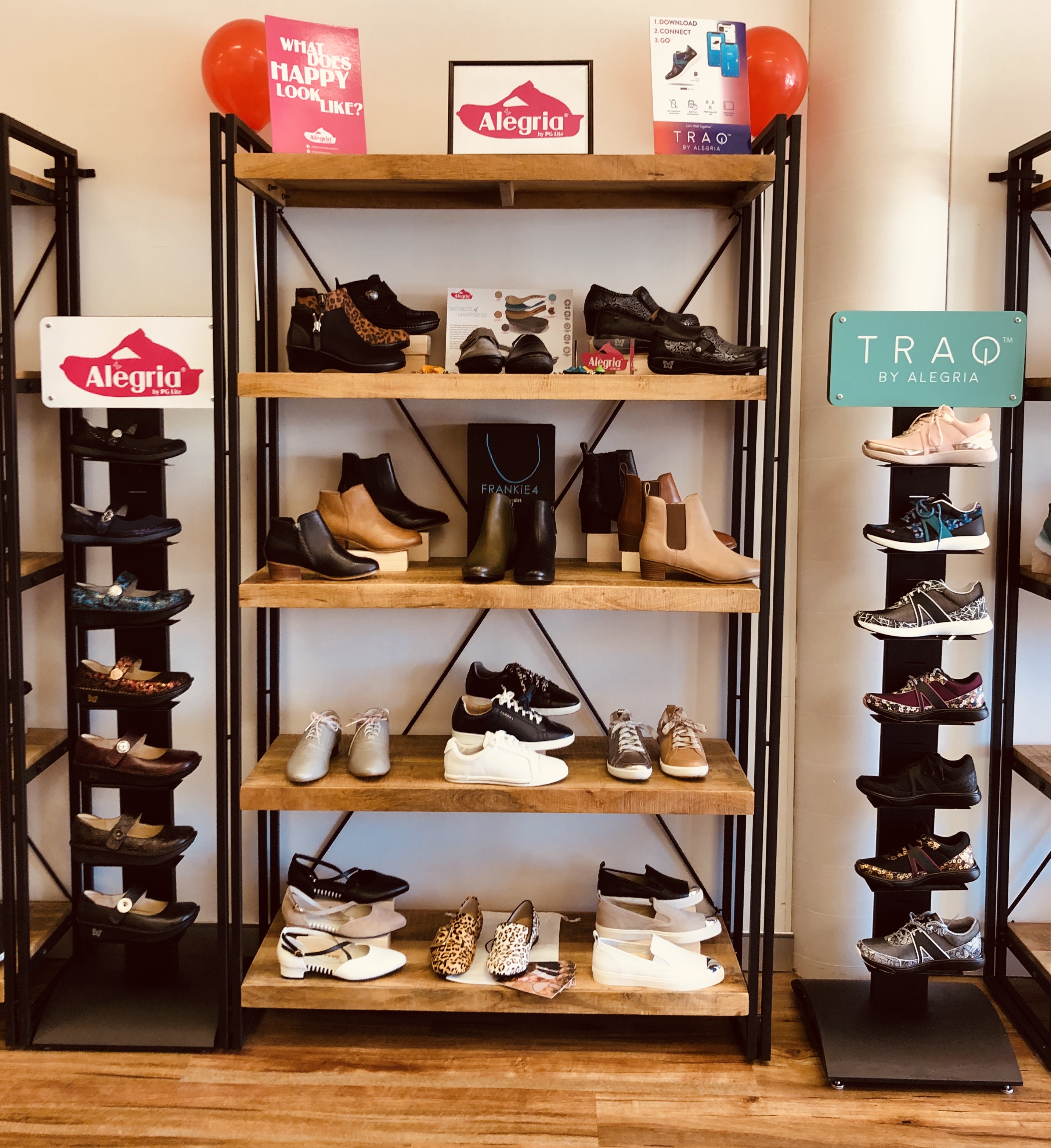Foot Pain and the Pandemic
- February 7, 2021
-
Jane Earl
- Uncategorized

Over the last 6 months we have seen a sustained increase in the number new patients presenting to our clinic with foot pain. We usually expect to see a small increase in patient numbers through the first weeks of the year, and follows the increased time spent barefooted and in less-than-optimal footwear over extended holiday periods. The significant increase in foot pain we are seeing now appears to be strongly correlated with changes in work/ life patterns that have occurred during the pandemic. Ditching the footwear we would normally wear in the office or out and about, in preference for sloppy slippers, thongs or going barefooted, appears to be taking its toll.
Common symptoms, of what I have aptly termed ‘’Covid Foot’’ include heel pain, arch pain and generalised aching. This may be isolated to the foot, or may involve the legs, knees, hips and possibly the lower back. Remember, as podiatrists we treat not only foot pain, but pain related to its associated structures further up the kinetic chain. These symptoms are mechanical in origin, and associated with the unrestricted movement the feet have been ‘enjoying’ during their break away from enclosed (and by default more protective) footwear.
Arch and heel pain (usually plantar fasciitis), bunions, aching and other postural symptoms are strongly associated with poor foot mechanics, and specifically feet that have a tendency to over pronate (excessively roll in). In milder cases, given a stable platform to work on, as in a suitable pair of shoes these feet may remain asymptomatic. But add an extended period of inappropriate footwear, combined with a few Covid kilos, and you have a text book case of Covid Foot.
Once symptoms have developed, it may take more than a return to our pre-pandemic shoe wardrobe to fix. Tissues that have been subjected to micro-trauma over many months won’t necessarily fix themselves. They will need time and rest to heal and will require a diligent and considered approach to footwear. Podiatric consultation and assessment may also be required to screen for mechanical weakness or more complex foot conditions that had previously been asymtomatic.
And those Covid kilos will need to be shed. But all in good time. Who can think about a power walk or gym class if they can barely walk from the bed to the toilet! Swimming and other forms of indoor aquatic recreation can offer a great, non-weight bearing alternative. So give this some consideration; shedding a few kgs can make a big difference.
Common Foot Problems and the Case for Good Footwear
Plantar fasciitis /Fasciopathy

Plantar Fasciitis can be a very debilitating condition
Plantar fasciitis /fasciopathy is experienced as acute pain on the inside of the heel. It is typically worse first thing in the morning on rising from bed. Characteristically, it gradually improves with activity, only to reappear when you get up again following any period of rest. It can progress to a chronic and extremely incapacitating condition in which any weight bearing is intolerable. In such cases, treatment may warrant a steroid injection and immobilisation boot to address the chronic pain and inflammation.
Any symptoms are best treated early. Think about your footwear (or lack there-of) in the weeks and months proceeding the onset of pain. Avoid going barefooted at all costs. It might be useful to keep have a pair of thongs or slippers that have some degree of arch support beside the bed. Once up and about put on your most supportive sneakers or house shoes. These should be firm though the mid sole and heel counter, and preferably not slip ons. If you struggle with lace ups, Velcro or zip closures offer a good alternative. If you are opting for a slip on shoe, make sure the heel doesn’t slip around in the back. Go for a shoe with some elastic banding over the forefoot allowing the shoe to be easily opened for access rather than a more open, ballet flat style of shoe.
Plantar fasciitis socks can be a useful adjunct to supportive footwear, offering compression and support though the heel and arch. I also recommend a programme of calf muscle stretches to anyone experiencing symptoms of plantar fasciitis.
If your symptoms are severe, or have lasted more than 3 weeks, I would recommend consulting with either myself or one of my colleagues at ACT Podiatry. You will be asked to bring along a selection of the shoes you wear regularly so we can make sure these are part of the solution rather than the problem!
Arch Pain and Generalised Aching
Arch pain and generalised acing are other frequently presenting symptoms at ACT Podiatry. Similar to plantar fasciitis, these symptoms are often associated with poor foot mechanics. High arches or flat feet may be contributing underlying factors.
Metatarsal stress fractures are felt as a localised deep aching pain on the top of the foot, usually over the 4th metatarsal shaft. If you are experiencing these symptoms a visit to ACT Podiatry is recommended to exclude conditions which may become more serious and difficult to treat if not accurately diagnosed and treated early. With appropriate mechanical therapy, stress fractures normally heal within about 4 weeks. Firm or rocker soled shoes with minimal flex may be recommended for medium to long term management and to avoid reoccurrence. Anyone diagnosed with a suspected stress fracture should also make an appointment with their GP to measure their vitamin D levels. (NB: stress fractures do not appear on X-ray in the early stages before heeling has commenced).
Bunions and Hammer Toes

Bunions and hammer toes are commonly encountered at ACT Podiatry and Happy Fit Footwear
Bunions and hammer toes are easily identifiable foot deformities affecting a significant number of people. It is hard to pinpoint the prevalence of these conditions since they are often asymptomatic, especially in the mildest of forms. Bunions and hammer toes may be seen in isolation, although hammering of the 2nd toe is frequently seen in association with bunion deformities.
A bunion is a medial deviation of the 1st metatarsal with subsequent dislocation and deformity of the associated metatarsal phalangeal joint. A lump appears, of varying degrees of severity, along the inside of the foot just behind the big toe. The big toe deviates inwards and may rotate, increasing the prevalence of ingrowing toe nails. The 5th metatarsal may also be affected (know as a Tailors bunion or bunionette).
A hammer toe presents as a significant bend affecting any of the lesser toes but most frequently the 2nd. The deformity occurs at the proximal interphanangeal joint and results in increased footwear pressure over the resultant bony deformity.
Both bunions and hammer toes may be asymptomatic, even in more advanced cases, although usually patients will complain of aching in the bunion joint and rubbing on shoes. Corns, which may become ulcerated, form over the pressure points and under the metarsal heads in more advanced cases.
If symptoms are mild, supportive footwear with sufficient width and depth to comfortably accommodate the deformities (no ballet flats here!) may provide relief. It should be noted however, that both these conditions are progressive. Underlying mechanical factors (usually maternally inherited) should be addressed to improve long term prognosis. Although there are no long-term studies to substantiate this, I have over 20 years experience in managing patients with bunions and hammer toes. My experience, and the biomechanical theory on which I have based my practice, suggests long term benefits of custom foot orthoses in people with bunions, hammer toes and flat foot deformities. Foot orthoses augment the support offered by stable shoes with sufficient width and depth. And whilst they don’t need to be worn 100% of the time, I would recommend them for any periods of prolonged standing or walking. Being mindful that damage is accumulative, and if you do find yourself working from home, it might be worth while keeping on your sneakers when you return from your morning walk!
People with significant bunion or hammer toe deformities may benefit from a consultation with our podiatric surgeon, Dr. Clayton Clews. X- rays of your feet and a thorough assessment of your foot/ ankle complaint, and medical history will enable an honest and open discussion about your treatment options. Surgery is designed to correct the alignment of your toes and definitively resolve your foot pain and deformity. This can dramatically improve your quality of life and make it a whole lot easier to find shoes that tick all the boxes! Check out some of our Google Reviews to read some of the first hand experiences and document the satisfaction of some of Dr. Clew’s patients!

Dr. Clayton Clews has expertise in the field of foot and ankle surgery
The Silver Lining
Every cloud does has silver lining! Let us spare a thought for those soles whose feet have never felt better. For those whose 9-5 footwear resemble something you might find in Carrie Bradshaw’s shoe closet, or on the catwalks of Milan. For these, the opportunity to work from home surely came with some relief. Perhaps for them a trip to Happy Fit Footwear in advance of their return to the office would be prudent!

For some, working from home would have come as a relief!
Happy Fit Footwear, next door to our practice in Tuggeranong, have a fabulous range of footwear suitable for most occasions. If you stand a lot at work, or during your daily activities, especially if you are overweight or have foot problems, footwear with a firm heel counter and midsole is the general recommendation. Office workers and those who are seated for most of the day can afford a little more flex through the heel counter and midsole (if they do not have foot problems).

Happy Fit Footwear offers the largest selection of podiatrist approved and orthotic friendly footwear in Canberra
For dressier occasions where you don’t intend on being on your feet for hours, there is an opportunity for more leniency. Try to avoid heels over 40mm, pointed shoes which cause pressure on the toes and anything that flexes excessively through the midsole. To minimize toe clawing (which can contribute to lesser toes deformities) opt for a shoe that holds onto the foot, rather than having to grip with your toes. Something with arch support, an ankle strap, and ideally an enclosed heel would be your best bet. Remember, there’s nothing sophisticated about having to remove your shoes half way into an evening so that you can walk!

Daisy He, director of Canberra based EMOII shoes, and Jane Earl, podiatrist and director of Happy Fit Footwear, show us some of the options available Happy Fit Footwear!
For sports specific athletic footwear, hiking boots, and for sneakers appropriate for sustained high impact activity, The Athletes Foot or The Runners Shop in Philip offer an extensive range. My top picks for athletic footwear are Asics, Brooks, Hokas (which incorporate a rocker sole profile) and for wider feet, New Balance.
Foot Notes
At the first sign of Covid Foot, think about your footwear and make the necessary changes to ensure your feet have the proper support. Your symptoms should improve fairly quickly, but if not make an appointment with your podiatrist for assessment and diagnosis. We have identified a strong case for supportive footwear and the avoidance of going barefooted, and have more ammunition against the minimalist footwear/ barefoot movement.
Correspondence: Please address any correspondence relating to this article to [email protected]
Suite 8 (Ground Floor), 146 Scollay St, Greenway ACT 2900
6287 4889
6293 2325
[email protected]
ACT Podiatry : Advanced Foot & Ankle Centre
Canberra Podiatric Surgeon
Suites 16-17 (First floor) 14-16 Brierly St, Weston ACT 2611
6287 2818
6293 2325
[email protected]
ACT Podiatry : Advanced Foot & Ankle Centre
Canberra Podiatric Surgeon
Copyright © 2018, ACT PODIATRY | SEO by High Jump Digital

